Photos: Black-Tailed Jackrabbits, the Curious Creatures of the American West
One of many
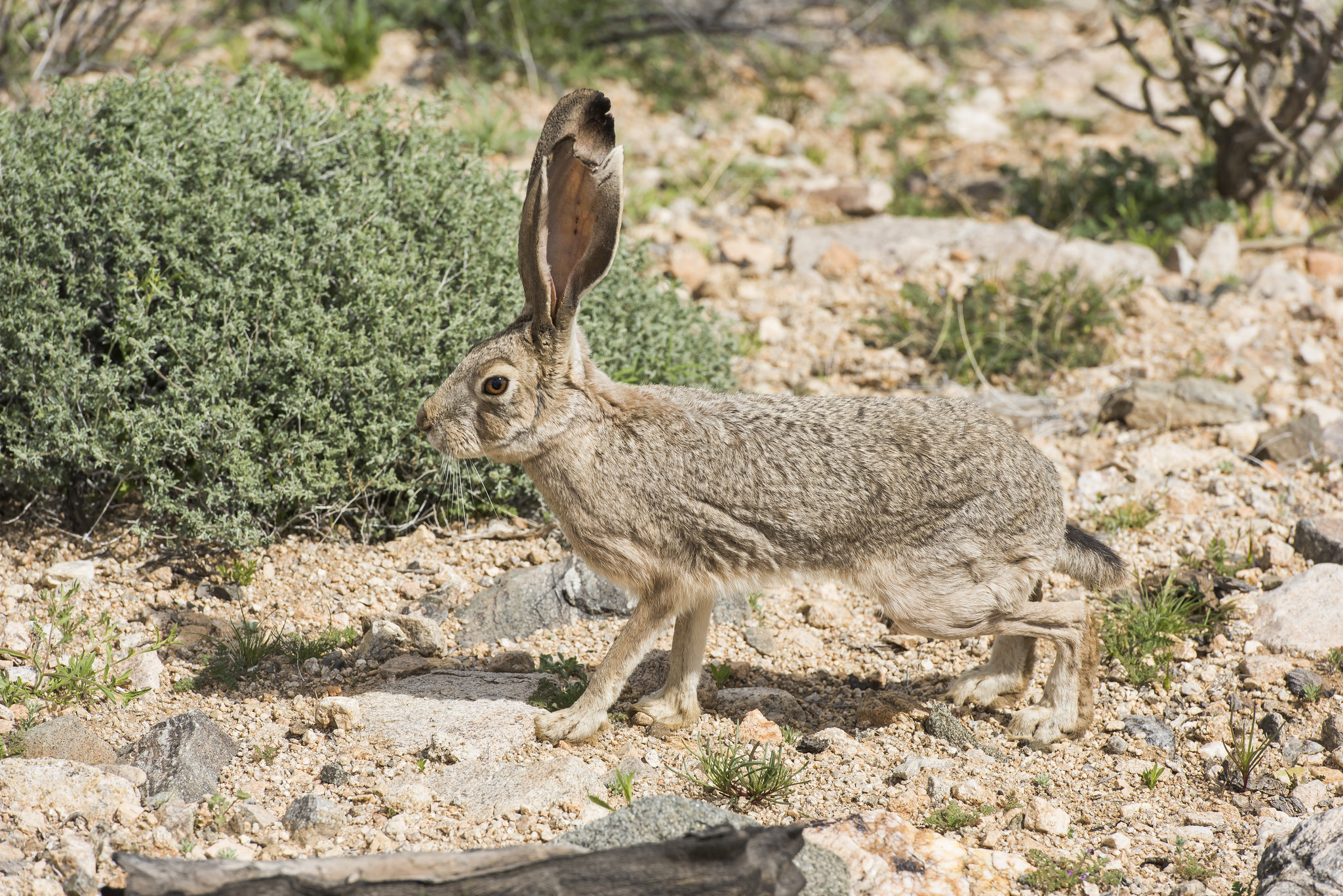
Biologists suggest that there are some 457 species of mammals that make the diverse ecological systems of North America their homes. But surely one of the more unique species of mammal found across the western regions of the continent is the black-tailed jackrabbit, Lepus californicus, a ravenous, long-eared herbivore. Author Mark Twain first brought this desert-loving creature to the American public’s attention when he referred to it as a “jackass rabbit” in his 1872 western adventure book, "Roughing It." Twain claimed that this ol’ arid critter had “the most preposterous ears that ever were mounted on any creature but a jackass.” Twain's label was soon shortened to the more socially acceptable “jackrabbit” moniker.
Far-reaching home
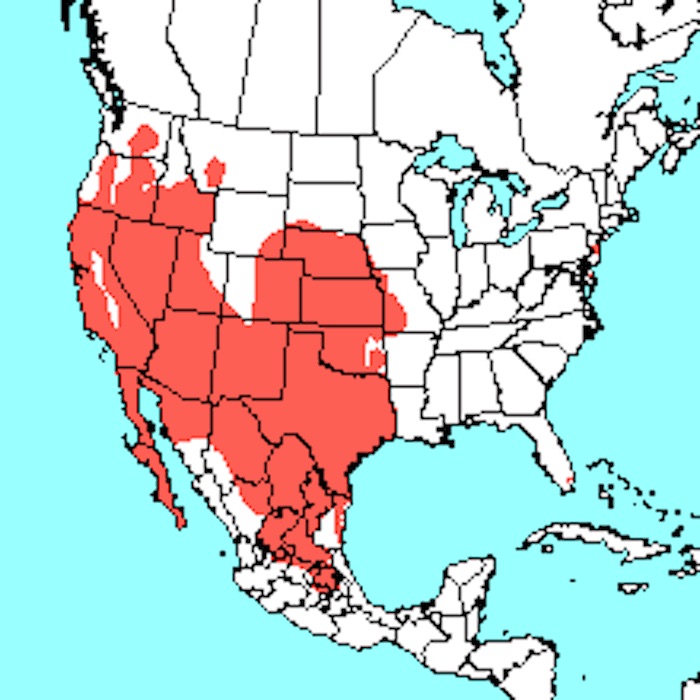
There are actually five different species of jackrabbits found in North America, but the black-tailed jackrabbit is the most widely dispersed. Black-tailed jackrabbits are commonly found as far north as Washington State and as far south as Mexico, as well as towards the eastern part of continent, up to Missouri and Texas. They can survive and in fact thrive in arid regions at elevations ranging from sea level to 9,000 feet (2743 meters). They prefer sagebrush or creosote plant communities but will also thrive near regions of cultivated crops.
Large animals
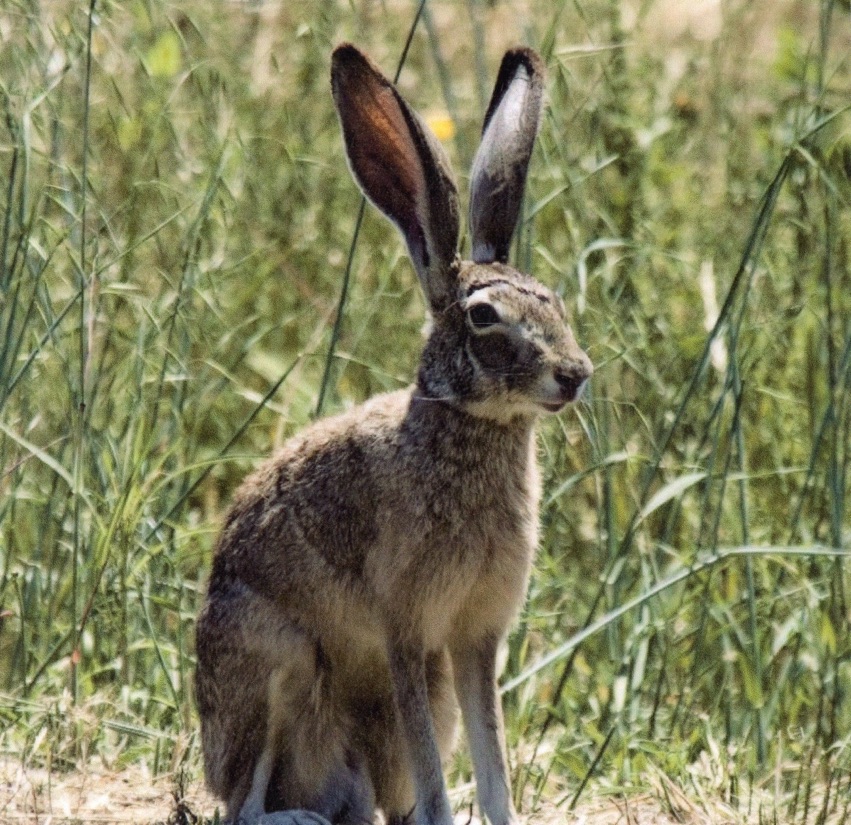
The name black-tailed jackrabbit is a misnomer, as the animals aren't actually rabbits at all. Rather, they are hares, because their young are born with fur and with their eyes open, unlike rabbits. Females and males look identical but females tend to be a little larger. A black-tailed jackrabbit can grow up to 24 inches (61 cm) in length, weigh as much as 8 lbs. (3.6 kg) and live upwards of five years. Their powerful back legs can propel them across the landscape at a speed of nearly 40 mph (64 kph) and their leaps can exceed 20 feet (6 m).
Better to hear
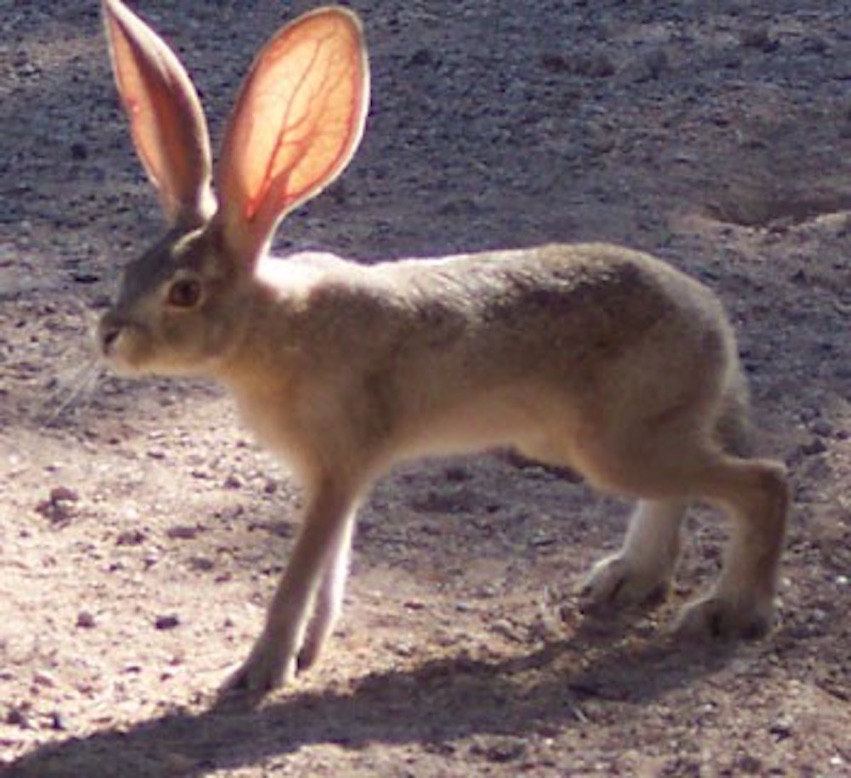
The most striking feature of all jackrabbits are their long ears. These long structures are an adaption of jackrabbits to their natural desert habitat, allowing them to cool down their body temperature. They do so because their ears are thin and have an extensive network of blood vessels running through them. When desert temperatures become too hot, the jackrabbit can increase the flow of blood through the ears by dilating its blood vessels. This dilation radiates heat from the body and cools the jackrabbit.
Self-preservation
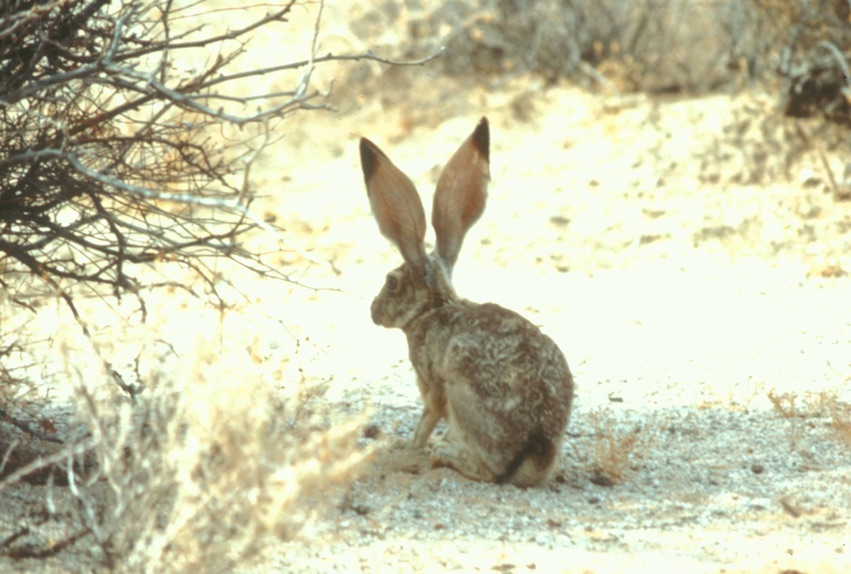
A jackrabbit’s ears can grow up to 8 inches in length (20 cm), and are whitish inside and out with the exception of their black tips. These large ears allow the jackrabbit to have excellent hearing, as they constantly screen their environment for the slightest noise that might indicate a nearby predator.
Leaf-eaters
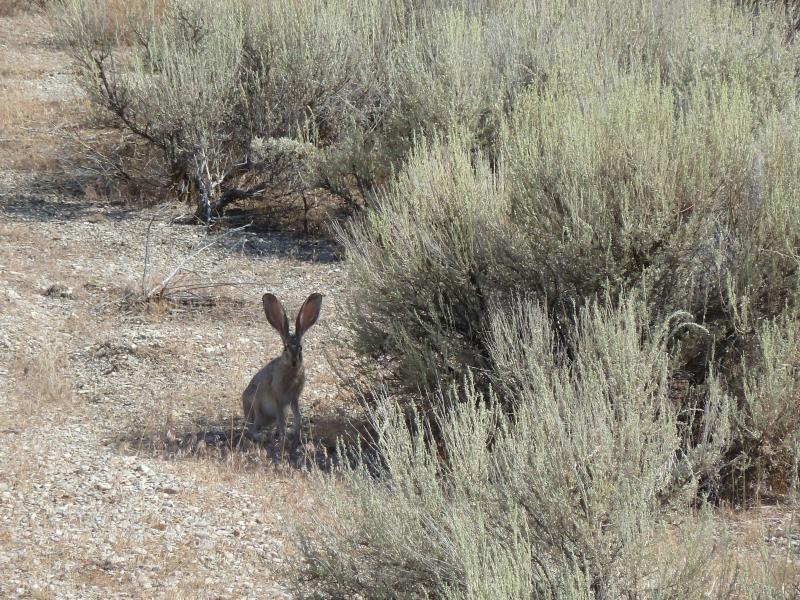
Black-tailed jackrabbits are also locally known as the American desert hare because they are found in all four of the North American deserts. They are herbivores that prefer to dine on the desert grasses and forbs in the spring, but during dry seasons will eat twigs, the bark of woody shrubs and even the skin of cacti. In agricultural areas, jackrabbits will consume newly sprouted plants and seem to love dining in a field of alfalfa. The consumption of these agricultural plants often make the black-tailed jackrabbit a pest to farmers.
Family creatures
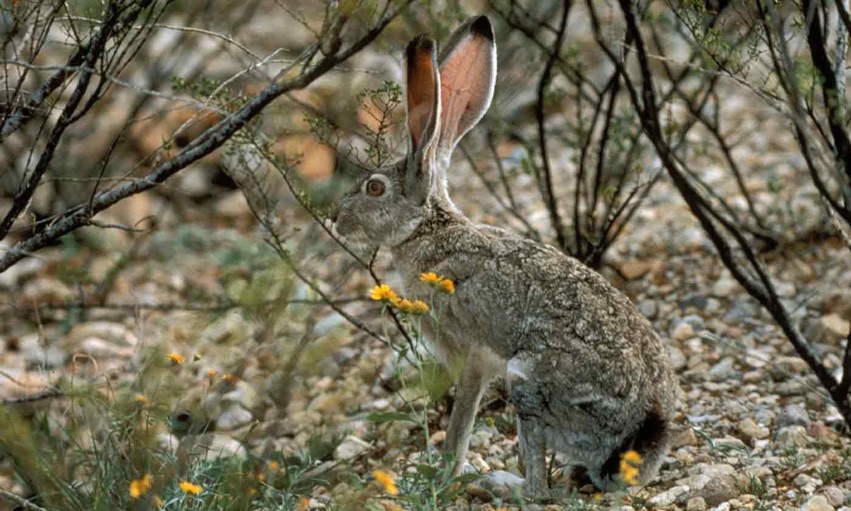
Black-tailed jackrabbits breed year-round. Most births occur in the early spring and taper off in late September. The animals are sexually mature at 8 months of age. Females give birth in simple grassy or fur-lined hollows or depressions scratched in the ground; they build no elaborate nests. Gestation periods range from 41 to 47 days, allowing the females to have up to four litters each year. Most litters will contain three to four young. Young only nurse for three to four days and become totally independent by the time they are a month old.
Get the world’s most fascinating discoveries delivered straight to your inbox.
On its toes
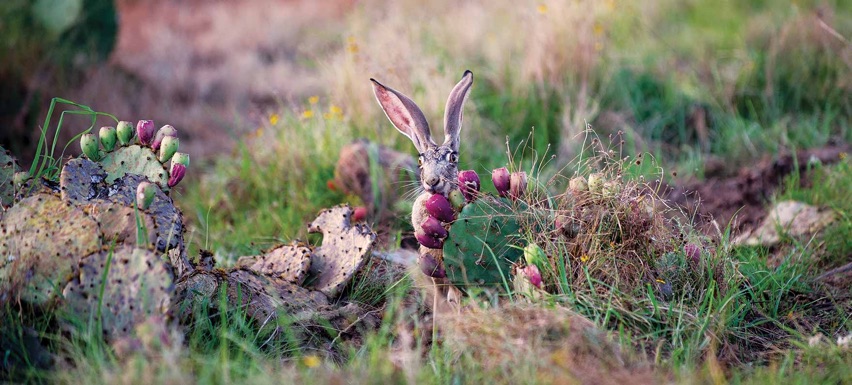
Black-tailed jackrabbits are considered nocturnal, resting in scraped out shady locations during the heat of the desert day. They are often seen in the early mornings grazing on anything that can provide them with nourishment and moisture. Many desert predators, such as coyotes, bobcats, foxes, badgers and weasels, feed on jackrabbits, so these hares are always a little jittery. When startled, their powerful back legs can speed them away through the desert landscape in quick, zig-zag movements at upwards of 40 mph (64 kph).
Tough animals
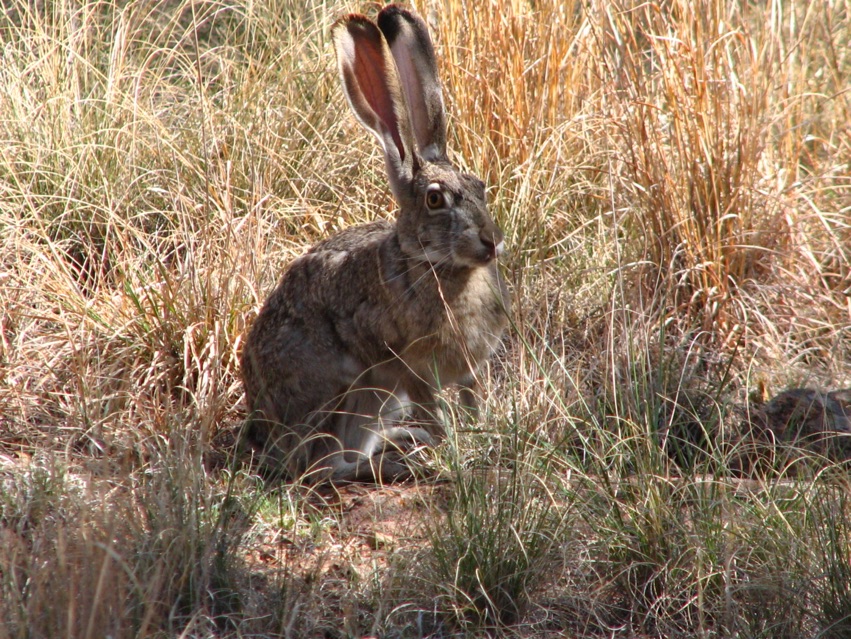
Black-tailed jackrabbits get their name from a 4.5 inch (11 cm) stripe of black fur that runs the from the top of the tail down to the rump. They are true animals of the harsh desert environment as even their digestive systems have adapted to the tough desert vegetation. For example, the jackrabbit's appendix acts as a pre-digestive vessel that starts the breakdown of the desert vegetation before it enters the stomach. Jackrabits then produce two types of scat — the first being a moist, mucous-coated soft sphere which they re-eat since the droppings are high in protein and certain B vitamins. Once these dropping pass through the jackrabbit’s digestive system again, a second dry, fibrous dropping is left behind on the desert floor.
Connection to the past
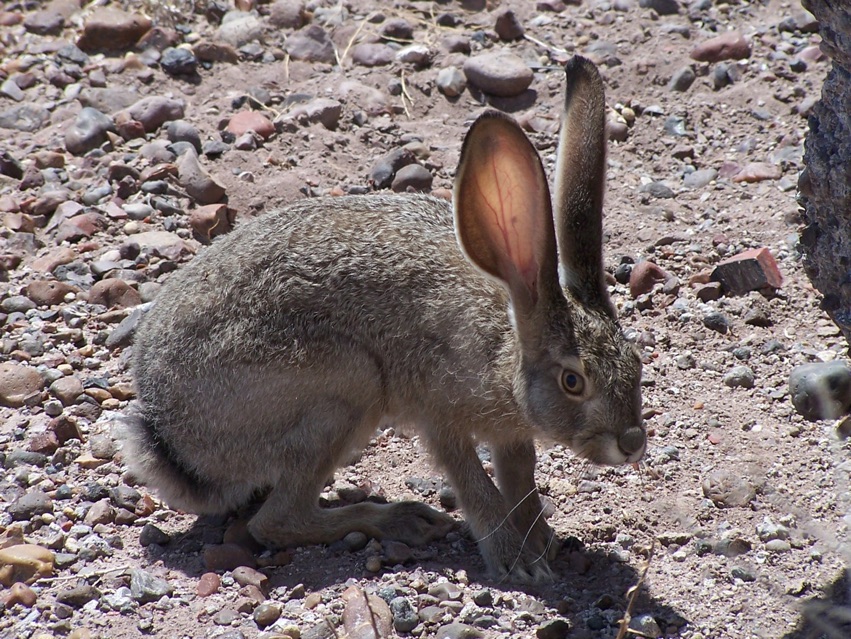
Jackrabbits have long played a key role in the traditions and lore of Native American cultures. In many cultures, all rabbit and hares are known to be tricksters who usually outwit their adversaries. At times, they are divine beings involved with the creation of the world. Their wisdom varies from aide in fertility, to magic, to the receivers of hidden teachings and quick thinking. For the Siouan people known as the Crow, jackrabbit worked with Old Man Coyote to recaptured a bag containing summer and returned summer to Crow country.
History and legends

Perhaps the most far-fetched legend involving the jackrabbit is the mythical animal known in folklore as the jackalope — a critter that seems to have come about by a head-on collision between the jackrabbit and an antelope. These horned hares were said to be racing around the American West when the early mountain men and pioneers first moved into the western deserts and prairies. Cowboys told stories and sang ballads of these pugnacious animals with the supposed ability to mimic the singing of the many forlorn and whiskey-loaded cowboys gathered around a lonely campfire. Historians contend that the first jackalope was actually created in 1932 by taxidermist Douglas Herrick in Douglas, Wyoming. Before he died in 2003, Herrick and his son would create thousands of jackalopes to sell to the always impressionable tourists of the Wild West.


